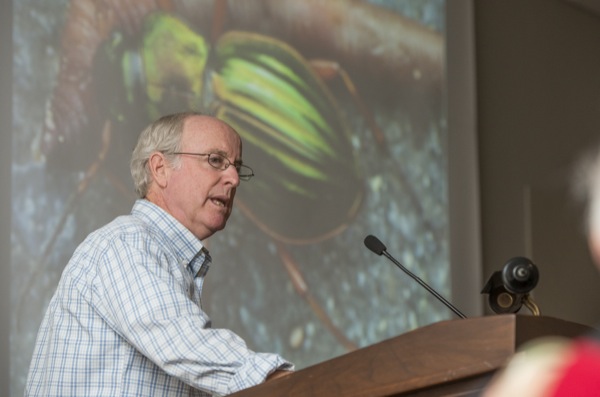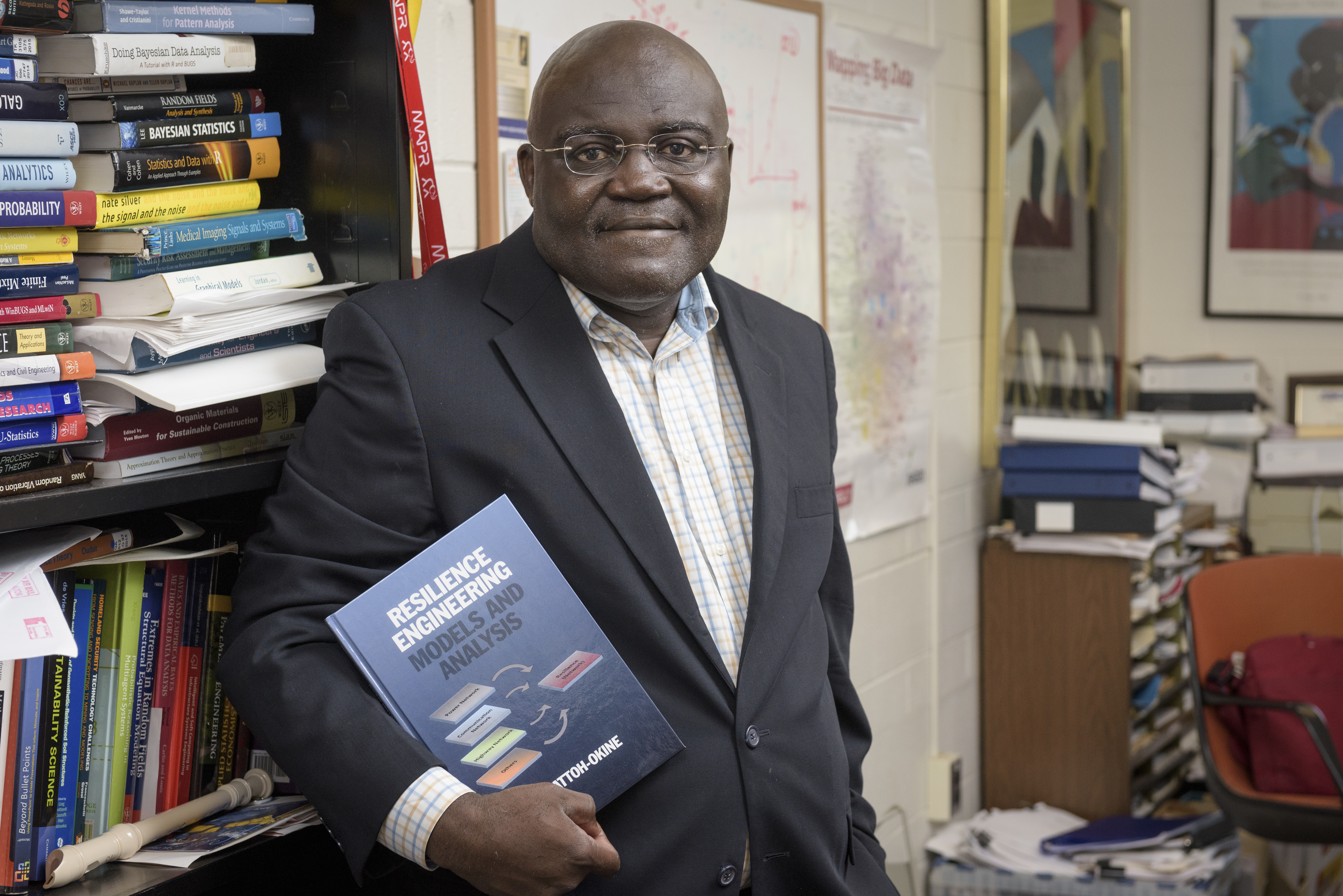
UDARF meets
Tallamy urges ecofriendly management of natural habitats
2:49 p.m., Dec. 9, 2013--Doug Tallamy believes that if nature, as we know it, is going to be saved, humans will have to do a much better job of managing the ecosystems that support the biodiversity of life on our planet.
Tallamy, professor of entomology and wildlife ecology at the University of Delaware, discussed the importance of biodiversity and ecosystem protection during a luncheon meeting of the UD Association of Retired Faculty held Tuesday, Dec. 3, in Clayton Hall.
People Stories
'Resilience Engineering'
Reviresco June run
The author of Bringing Nature Home: How Native Plants Sustain Wildlife in Our Gardens, (Timber Press 2007), Tallamy began his “Network for Life: Your Role in Stitching Together the Natural World” presentation by recalling President Theodore Roosevelt’s 1908 dictum of “leave it as it is” to those who advocated mining the Grand Canyon.
“It is no longer an option to leave most of our country as it once was,” Tallamy said. “Only five percent of the lower 48 states are even close to being in a pristine ecological state.”
The remaining areas, Tallamy said, have been logged, tilled, paved, drained, grazed or otherwise developed, with rivers either straightened, dammed and, in some cases, not even reaching the sea.
This state of environmental degradation can be traced to a failure to abandon the adversarial relationship with the natural world that enabled hunter-gatherer societies to survive, Tallamy said.
“Remember, it was nature that ate us, froze us, drowned us, starved us and destroyed our crops, and the more we beat back nature, tamed it or eliminated it, the better off we were,” Tallamy said. “Our war against nature worked in the past without causing ecosystem collapse because there were so few of us. Understanding this is the key to fixing the problems we have created.”
Fragmented into small, isolated pockets, the natural world has been carved into tiny remnants of its former state, with each area too small to sustain the species that run its ecosystems, Tallamy said.
Tallamy cited a study of the number of Eastern box turtles living on a 35-acre woodlot just east of the athletic facilities on UD’s south campus that has been isolated for the past century.
“When the study began in 1968, researchers found 91 turtles. There were 22 in 2002 and in 2010 there were just 12 turtles found in that woodlot,” Tallamy said. “When you take large populations of species and shrink them down to tiny populations, they are highly vulnerable to local extinction.”
Ecosystems function locally, Tallamy said, and recent research suggests that every species counts.
“We need them all, because biodiversity runs our ecosystems,” Tallamy said. “Biodiversity is essential to ecosystems because it increases stability, improves biogeochemical processes, increases productivity and decreases susceptibility to biotic invasions.”
A viable alternative to fragmentation and local species extinction is the creation and expansion of corridors linking these isolated habitats, Tallamy said.
Convenient opportunities for building such corridors include mountain ridges, riparian corridors, cross-country power lines, roads and rangelands.
“We need to expand our traditional definition of a corridor, because the ones we have are not big enough,” Tallamy said. “Biological corridors must do more than facilitate movement -- they must support life.”
For such corridors to become viable connections they need to become functional habitats populated with native plants that support biodiversity and sustain ecosystems, Tallamy said.
“The more plants you have, the more animals you will have saved,” Tallamy said. “Plants provide all of the food and much of the shelter for the animals that run our ecosystems. Plants are literally a matter of life and death.”
With more than 3,300 nonnative plants introduced in the United States, selecting native species that support animal life is key to restoring the balance of nature, Tallamy said.
“Most insects, especially the ones birds eat, develop and reproduce only on the plants with which they share an evolutionary history,” Tallamy said. “We must use the knowledge that most insects are specialists to build corridors that support effective food webs.”
Land management alternatives can also be adopted in residential areas where the norm is having a large lawn and decorative plants that don’t sustain beneficial insects and the birds that feed on them, Tallamy said.
“The typical suburban yard has 90 percent less tree biomass than the natural woodlot habitats, and we have landscaped these areas the way we do because we now see plants only as decorations,” Tallamy said. “Future criteria for choosing plants for our landscapes need to include a sizeable percentage dedicated for food web, watershed, wildlife and soil restoration, accompanied by a more balanced percentage of plants chosen for decorative value.”
Tallamy said that the world is entering a new era, the ecocene, where ecological sustainability will not be just a tired cliché but a globally embraced mandate.
“Our age-old need to destroy the life around us in order to survive will be replaced by the ethical and ecological imperative to sustain it, because we have no other choice,” Tallamy said. “I for one cannot wait for the ecocene, and you won’t either. If we practice conservation in our public spaces, our work places and in our yards, we will enrich our lives.”
Article by Jerry Rhodes
Photo by Kathy F. Atkinson








